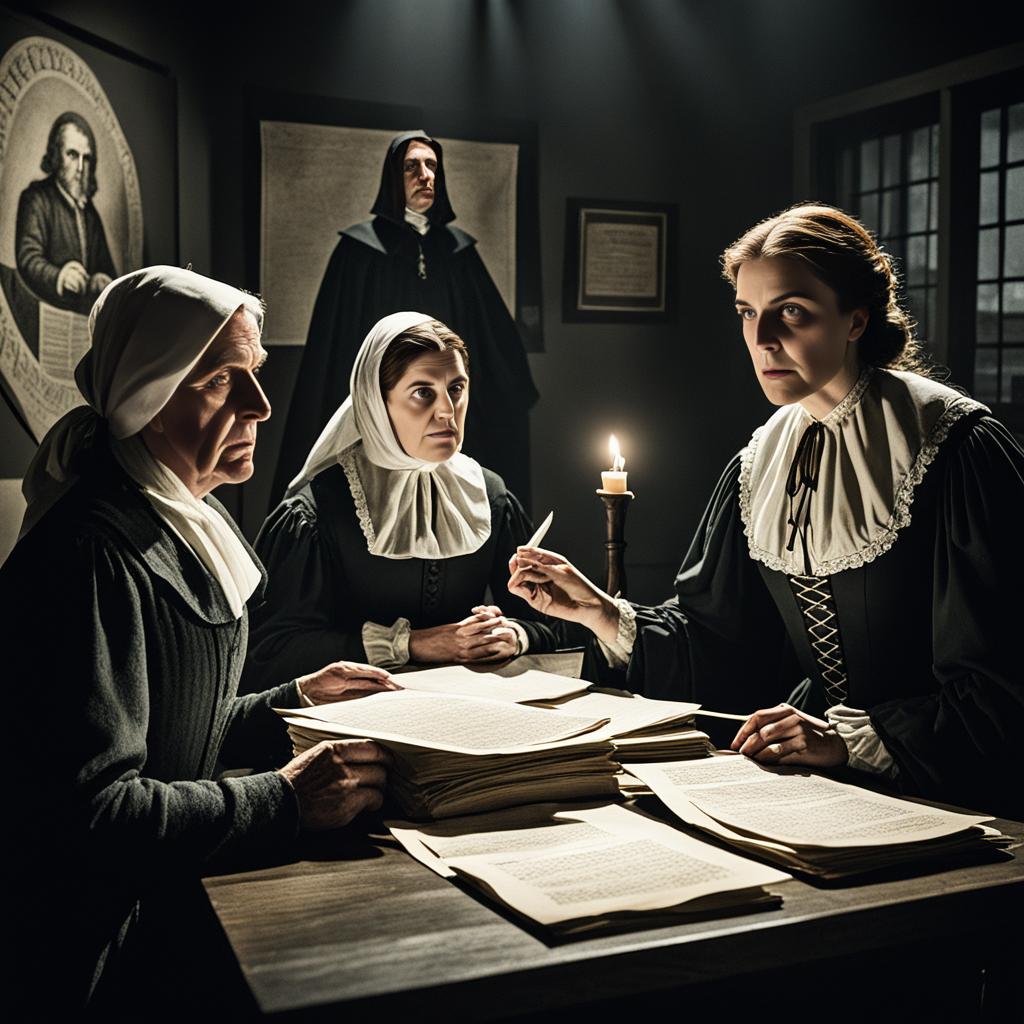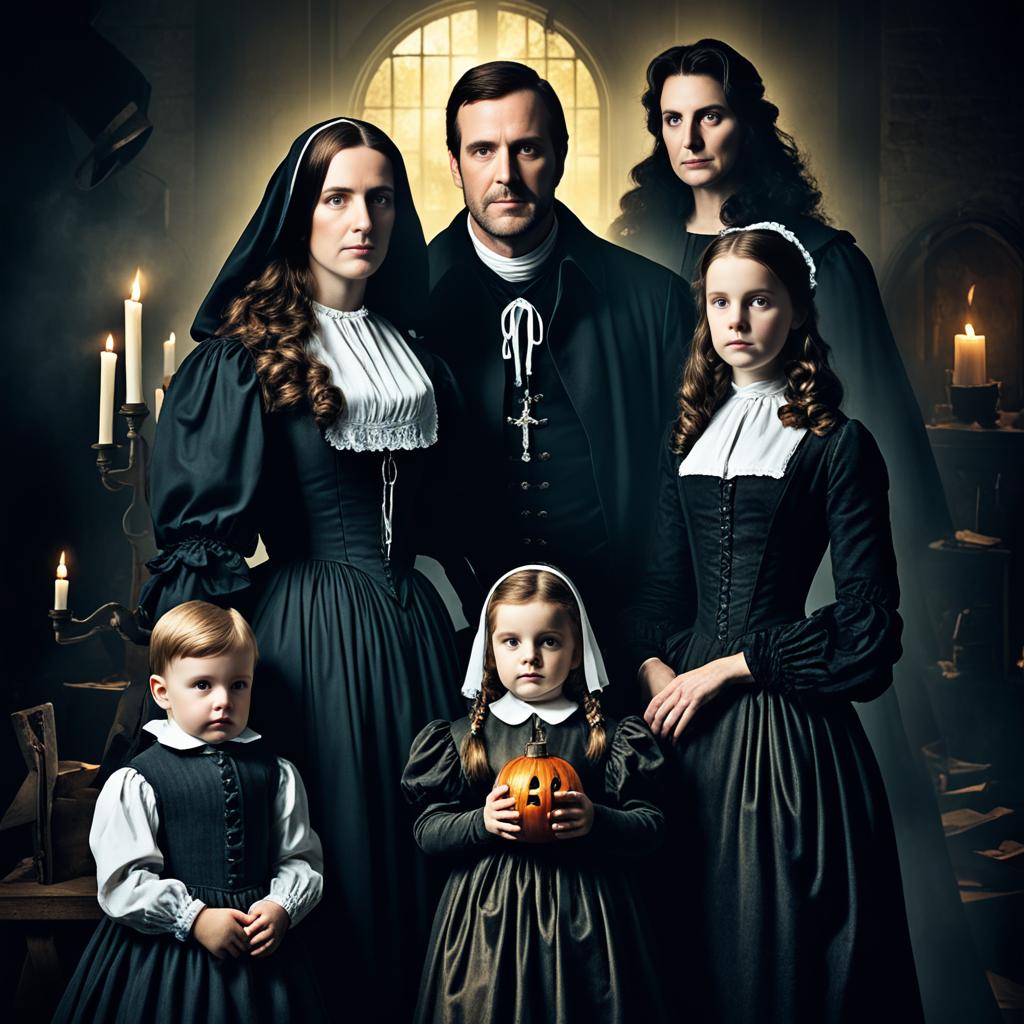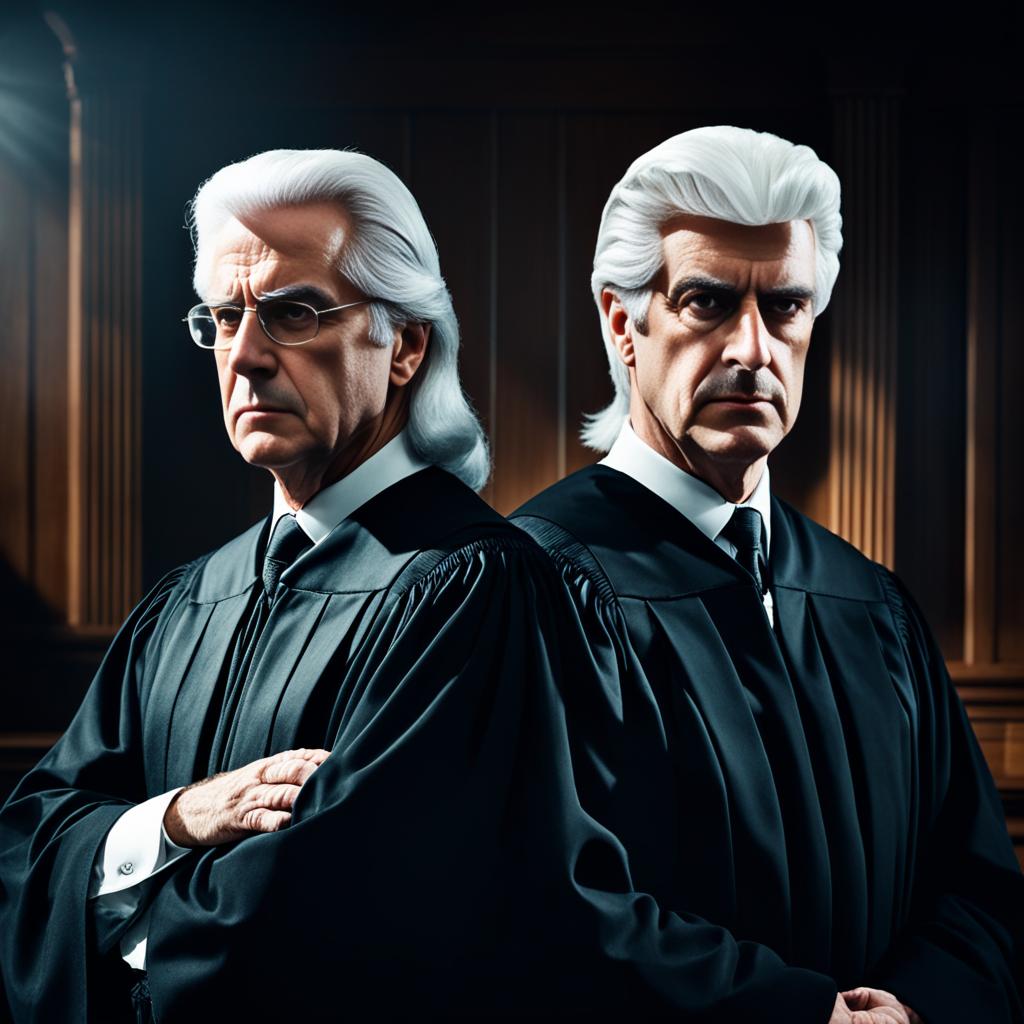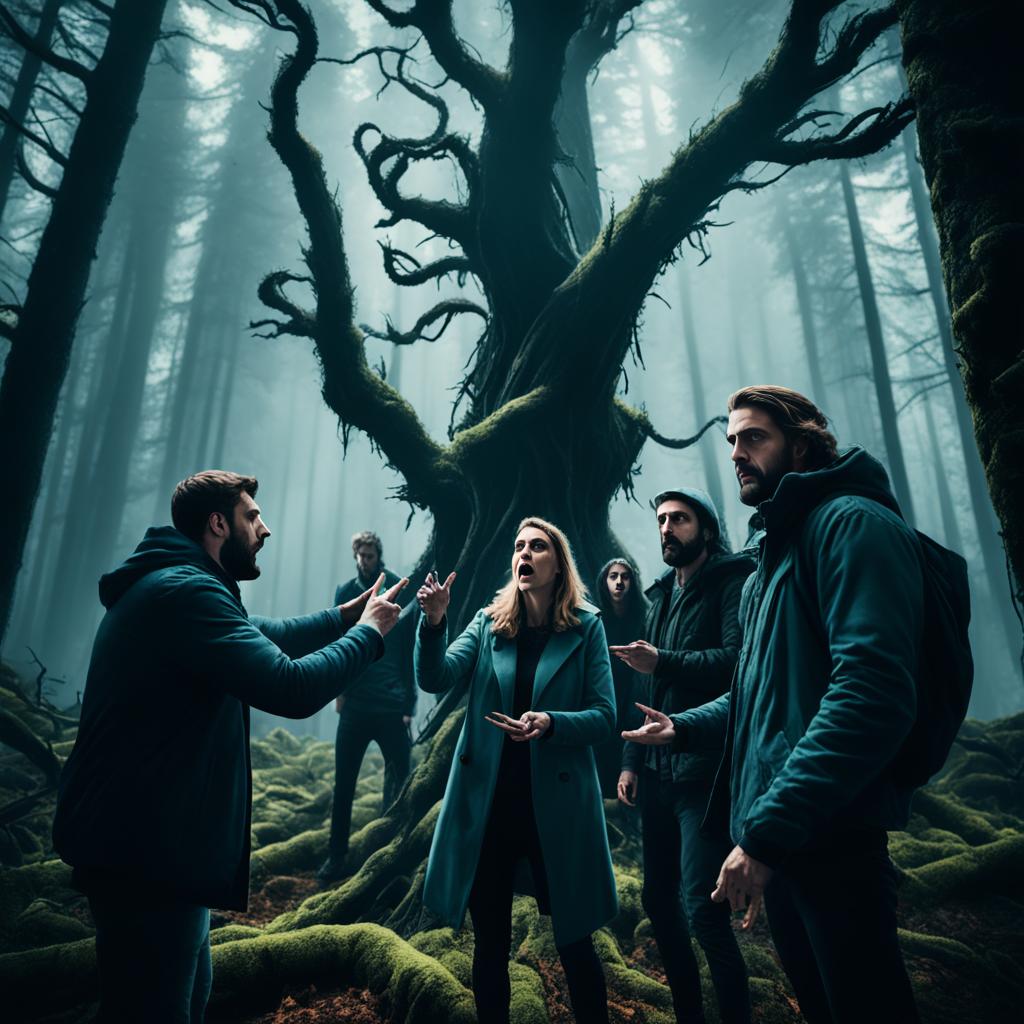What caused the Salem Witch Trials in 1692? Dive into the dark tales of accusations, trials, and deaths. This era of witch-hunting shook Colonial Massachusetts. Today, these events still provoke thought about justice and intolerance in America’s past.
In Salem, Massachusetts, a terrifying story unfolded. Accusations of witchcraft spread quickly, shrouding the community in fear. Innocent people were accused and lost their lives in the trials.
How did the Salem Witch Trials become so severe? What led to the deaths of many individuals? Let’s explore these questions and learn more about this haunting period in history.
The Accused: Bridget Bishop, Tituba, George Jacobs Sr.
Among those accused in the Salem Witch Trials were Bridget Bishop, Tituba, and George Jacobs Sr.
Bridget Bishop was the first to be tried. She was a widow from Salem. Years before, she had been accused of witchcraft but found not guilty.
Tituba, a slave from the Caribbean, worked for Reverend Samuel Parris. Her testimony was key in the trials. It helped to make the fear and accusations grow.
George Jacobs Sr. was a farmer from London. He suffered from arthritis. He was a victim because his son was friends with a family that the powerful Putnam family disliked. All three were found guilty with severe results.


The Accused: Rebecca Nurse, Giles and Martha Corey
The Salem Witch Trials brought tragedy to Rebecca Nurse, Giles Corey, and Martha Corey. Rebecca Nurse was well-respected but struggled to speak during her trial due to her age and deafness. Even though the jury first said she was not guilty, the judges influenced them to change their minds. This led to Rebecca Nurse being wrongly hanged.
Giles Corey and Martha Corey were also wrongly accused. Giles refused to plead in court, so they used a cruel punishment on him. They put heavy stones on his chest until he was crushed. Martha Corey was later hanged with seven others because of these false accusations.
These tragedies show the terrible effect the Salem Witch Trials had. The sad stories of Rebecca Nurse, Giles Corey, and Martha Corey tell of the unfairness and sorrow of that time.
The Accusers: The Putnam Family
The Putnam family was a well-known part of Salem Village. They believed in Puritan values. They had a lot of land in the village. They also supported Reverend Parris strongly. Ann Putnam Jr. and other Putnam family members accused many people of being witches. This included those in the community and their own family. This shows how power and disagreements were big parts of why people were accused.
The Putnams’ power in the village let them control the witch trials a lot. Because they were respected, people took their word seriously. This led to the arrest and punishment of many innocent people. The Putnams used the fear and confusion in the village for their personal gain. They settled scores and grew their own power through the trials.
The Putnam family mixed personal issues with strong religious beliefs and the desire for more power during the Salem Witch Trials. They accused people they knew to increase their power and remove threats.
A major event related to the Putnams was the accusation of Rebecca Nurse. She was an elderly church member who everyone respected. But the Putnams thought she was a witch and accused her. Ann Putnam Jr., who was only 12, said she saw Nurse’s ghost. This and other accusations from the Putnams led to Nurse’s execution.


The Rivalry with the Porter Family
The Putnam and Porter families didn’t get along. The Porters were also powerful in Salem Village. The Putnams were threatened by their success. This rivalry got worse during the witch trials. Both families accused each other of witchcraft.
The Putnams went as far as accusing the Porter family, including Rebecca Nurse’s sisters, of being witches. This made the community’s divide deeper. Sadly, the Porters were among the innocent people who were killed because of the Putnams’ accusations.
The Putnam family’s role in the witch trials shows how complicated and personal the motivations were. Their actions led to the deaths of innocent people. This chapter in history shows how wrong things can get when fear and personal conflicts guide justice.
The Judges: Jonathan Corwin and Samuel Sewall
In the Salem Witch Trials, Jonathan Corwin and Samuel Sewall were key figures. Corwin was a merchant and in politics. He was also a magistrate during the pretrial examinations in 1692. He lived in the Witch House in Salem, which is now a historic site.
Sewall was educated at Harvard and was one of the nine judges chosen by Governor Phips. They both took part in the trials, where innocent people were found guilty wrongly.
Jonathan Corwin was a respected leader in the area. His role as a magistrate helped push the trials forward. Sewall, being a Harvard man, used his legal knowledge in the proceedings. Together, they supported the trials, which led to the death of many who had been accused of witchcraft.


“The Witchcraft delusion is in part the product of the hopes and fears, the loves and hates, the ambitions and jealousies, which have been inherent in man’s nature in all ages. These emotions, on the whole, have been hopeful, helpful, and inspiring, but men have not infrequently stumbled, and sometimes fallen into a veritable pit of despair, because their emotions have worked together for their undoing.”
Even though they played a part in the trials, Samuel Sewall eventually felt sorry for what he had done. He openly said he was sorry for the injustice that happened. This showed how complex the situation was and the ongoing effects on the community.
The Spread of Hysteria: Factors Behind the Trials
Many factors led to hysteria during the Salem Witch Trials. Witch hunting was common in Europe before it spread to the New World. The strict society and religious beliefs of the Puritans made people quick to suspect and blame others.
Puritans believed deeply in God and the devil. They thought the devil caused any bad thing or sickness. This made people very afraid and quick to point fingers. Any slight difference from what was deemed normal could make them a target.
The crisis started when a few girls claimed they were being used by the devil to harm others. People trusted these young accusers, and soon, many were accused of witchcraft. This fear mixed with faith in the supernatural caused the number of accusations to skyrocket.
“Our community is besieged by an unseen evil, and it is our duty to identify and eliminate all those involved in witchcraft,” Reverend Samuel Parris proclaimed during this turbulent time.
Tensions with Native Americans and political worries also played a part. The fear of Native American attacks was high. This fear made people look for something, or someone, to blame. Changes in the government and laws added to the sense of unease.
All these factors together caused the Salem Witch Trials. The events reached into every corner of Salem, affecting both the accused and their whole community. It is a dark chapter in American history, reminding us of the dangers of fear and intolerance.


The Trials and Their Impact
From 1692 to 1693, the Salem Witch Trials shook the community. One hundred and fifty people were accused. Sadly, 25 innocent lives were lost.
Many accused were hanged. Giles Corey suffered a different fate. Huge stones were placed on him until he died.
The community was torn apart by these trials. Salem’s reputation was badly hit. Recovery from this injustice took many years.
People apologized for what happened. They worked to clear the victims’ names. These efforts aimed to recognize and correct the past wrongs.
“The Salem Witch Trials stand as a stark reminder of the devastating consequences that can arise from mass hysteria and the power of unfounded accusations.”
The trials’ lessons are still relevant today. They highlight the need for fairness and the risks of fear and paranoia.


The Lasting Legacy and Ongoing Importance
The Salem Witch Trials remind us of a fearful past in American history. They continue to interest and educate people today. These events warn against witch hunts and mass panic.
“The trials remind us of the fragility of the human judgment and the importance of compassion and empathy when dealing with accusations and fear.”
Today, Salem is known for embracing its occult history. The trials’ memory lives on in books, movies, and historical lessons. They remind us to remember and learn from past mistakes.
Salem Witch Trials: A Legacy of Intolerance and Lessons Learned
The Salem Witch Trials left a long-lasting mark of intolerance. They stand as a warning of the risks of witch hunts and mass fear. In 1692, Salem, Massachusetts, saw a series of events where many innocent people were accused of witchcraft, leading to their unfair persecution and death.
These times remind us why due process is crucial and why we should not trust on shaky evidence and rumors. Those accused had little chance to clear their names in unfair trials. This shows the critical need for a just legal system.
The trials’ effects can still be felt today, especially in the town of Salem. Salem has embraced its history, attracting both tourists and those interested in the occult. This shows the ongoing impact of that period.
“The infamous Salem Witch Trials highlight the devastating consequences of unchecked accusations fueled by fear and prejudice. It is vital that we learn from these dark chapters in history and strive for a society that values justice, compassion, and tolerance.”
The tale of the trials lives on in books and story, becoming a symbol for injustices of the past. It challenges us to stay alert and work towards a just society that respects everyone’s rights and promotes fairness and equality.
The Lessons Learned
- 1. Intolerance leads to injustice: The Salem Witch Trials demonstrate the dire consequences of intolerance and the dangers of persecution based on unfounded accusations.
- 2. Presumption of innocence: The trials underscore the importance of the presumption of innocence and the need for fair trials that allow individuals to defend themselves.
- 3. Critical examination of evidence: The trials highlight the importance of critically examining evidence before passing judgment, as relying on unreliable evidence can lead to grave miscarriages of justice.
- 4. Overcoming prejudice: The legacy of the trials serves as a reminder to overcome prejudice and promote understanding and acceptance in our society.
Conclusion
The Salem Witch Trials marked a gloomy era in the U.S.’s past. They showed how superstition, fear, and zero tolerance can lead to tragedy. Happening in 1692 Colonial Massachusetts, these events drew from religious, social, and political turmoil.
People wrongly accused were convicted and put to death using little proof. Mass hysteria took over the society, leading to this dark phase. This teaches us about the major influence of religious beliefs and social pressures.
These trials left a legacy of injustice, warning us about the risk of unchecked allegations. They still catch our attention today, showing the flaws in human judgment. It emphasizes the urgent need for kindness and understanding.
Even today, the Salem Witch Trials warn us about the deadly mix of fear and prejudice. They highlight a scary side of humanity and the sheer value of protecting everyone’s rights. We should always strive for justice and reason over fear.
